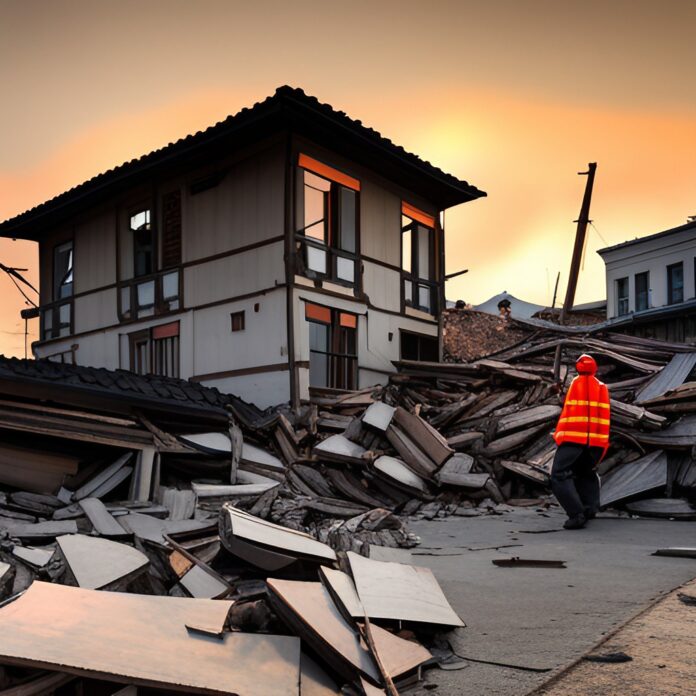Shaken, not stirred – unfortunately, we’re not talking about your favourited martini here, but rather the startling event of an earthquake. In some parts of the world, particularly known “Ring of Fire” regions, the ground can give your home and your heart a not-so-friendly jig, and it’s imperative for savvy citizens to be prepared for such temblors.
Home is the heart of safety and security, yet when Mother Nature gets fidgety, that ground zero shifts from comfort to caution. To all the homeowners and families out there, consider this your earthquake safety boot camp. We’re not going to bore you with endless lists of survival gear, but we do promise a no-nonsense guide to keep you safe and sound while the earth does the Harlem Shake.
Understand the Rumble
Imagine a sudden violent jerk that’s capable of moving even the mightiest structures — that’s an earthquake in action. But what causes it? We’re talking tectonic plates, those massive puzzle pieces of the earth’s lithosphere, which are always on the move. When they decide to jostle each other, that’s when we hear that earth-shaking news. Knowing your enemy is the first rule of any battle, so here’s a quick 101 on the rumble beneath.
Why it Happens
The earth’s lithosphere is broken up into tectonic plates, some of which are minor movers, while others are the very definition of continental drift. Their movements are driven by the intense forces within the earth, and at times, their edges, or faults, rub together, creating all that seismic fuss.
The Aftermath
Post-quake can be as dangerous as the quake itself, with aftershocks that could last for days, weeks, or sometimes even months. The ground beneath you might not feel reliable for quite some time.
Safety First, Safety Fast
Okay, the earth is quaking beneath your feet — what’s next? The key is to think and act smartly with split-second decisiveness. Remember, seconds could be all that’s standing between you and safety. This checklist will ensure you’re as ready as can be.
The Great Cover-Up
It’s not quite hide-and-seek, but it’s close. Whenever the quake starts, take cover under a sturdy piece of furniture to shield you from any falling debris. Seek refuge under that trusty old dining table or desk until the shaking stops.
The Great Outdoors, Indoors
Knowing the best spots at home during an earthquake is crucial. Avoid windows, heavy bookshelves, and items that could become projectiles. Outdoors? Open spaces are your friends. Indoors? That door frame you often overlook can be a shield in a pinch.
Home Quake Break Down
Alright, the tremors have ceased, and you’re eager for life to return to normal. But hold up! Your environment may look normal, but it’s a brave new world post-quake, and not the kind enjoyed by cartographers. Be mindful and methodical in your approach.
Get a Grip on Gas and Water
Earthquakes can rupture utility lines; you definitely don’t want to light a match and test if that hissing noise is a gas leak. Turn off these services if you suspect damage. When it’s safe, check for any irregularities before resuming use. Water, on the other hand, might be scarce even if there’s no visible line breakage. Stash and conserve fresh water – it’s your liquid gold right now.
The Light Show Must Go On – With Caution
Power lines could flop like a downed puppet, but there’s also the risk of sparking wires hidden from sight. Use flashlights, not matches, and determine if it’s safe to use your home’s electrical system.
First Aid — Your Earthquake Elixir
Okay, perhaps you’re not a paramedic or a crisis counsellor, but a little knowledge in these areas can be the difference between a mild inconvenience and a full-blown disaster during the aftermath. The home is your castle, and ensuring you’re equipped to deal with the inevitable nicks and knocks post-quake is paramount.
Stock Up on Supplies
Create a first aid kit that would make even the most experienced hiker a tad envious. Include all the basics like bandages, antiseptics, and pain relievers, of course. But don’t stop there; toss in some heavy-duty stuff too, like blankets and scissors, and don’t forget any personal medications.
Know Your ABCs
It’s not the alphabet here but rather a reminder of Airway, Breathing, and Circulation – the three crucial elements of life-saving CPR. Add a first aid manual to your survival stack and make sure everyone knows where it is.
I’m Okay, App?
In this digital age, there are apps for everything—earthquake readiness is no exception. Apps like Red Cross’s Earthquake and My Shake bring real-time alerts and advice to your fingertips. Prepare to survive smarter by including tech in your toolkit, and consider subscribing to your local emergency notification systems that will keep you in the loop when the ground gets shaky.
Rebuilding & Recovery
The road to recovery is long, and it’s not something anyone wants to walk alone. Post-disaster can rattle more than bones, and emotional support can be as necessary as the physical stuff. Contact your local disaster relief organizations for support. It’s a community effort, and you’ve got a role to play.
Insurance & Claims – Your Right, Not a Shaky Promise
Ensure you’ve got the right insurance coverage for your home and its contents. After an earthquake, contacting your insurer should be your top concern, and having a clear inventory of your possessions is pure gold when it comes to filing a claim.
Home Check in the Aftermath
Once the dust has settled, literally, it’s time for a home check. Look for structural damage, particularly signs of cracks, leaks, or shifted foundations. Remember, your home may be your greatest asset, but it also needs to be safe to inhabit.
Earthquake Sydney: Riding the Waves Down Under
So, you thought Sydney was all about the Opera House, sunny beaches, and koala cuddles? Well, add a little shake, rattle, and roll to that list! While it’s not Hollywood’s favorite earthquake hotspot, Sydney has had its share of the earth doing the jitterbug beneath its feet. Not to worry, though! These tremors are more of a nudge than a full-on tango. It’s Mother Nature’s way of reminding us she’s still got moves. The key takeaway? Stay prepared, stay informed, and maybe, just maybe, appreciate the solid ground a bit more while you’re enjoying those flat whites and harborside views.
Final Thoughts
Earthquakes don’t need an RSVP—they arrive unannounced and with a total lack of regard for your good China. They’re not to be taken lightly, but with preparation and a cool head, you can minimize their impact. Prioritize safety, keep a well-stocked first aid kit, know your home’s safety sweet spots, and tech up with warnings. You’ve now graduated from the School of Earthquake Smarts. Remember, when it comes to quakes, it’s not about predicting when, it’s about being prepared when it happens. Stay safe, stay savvy.


